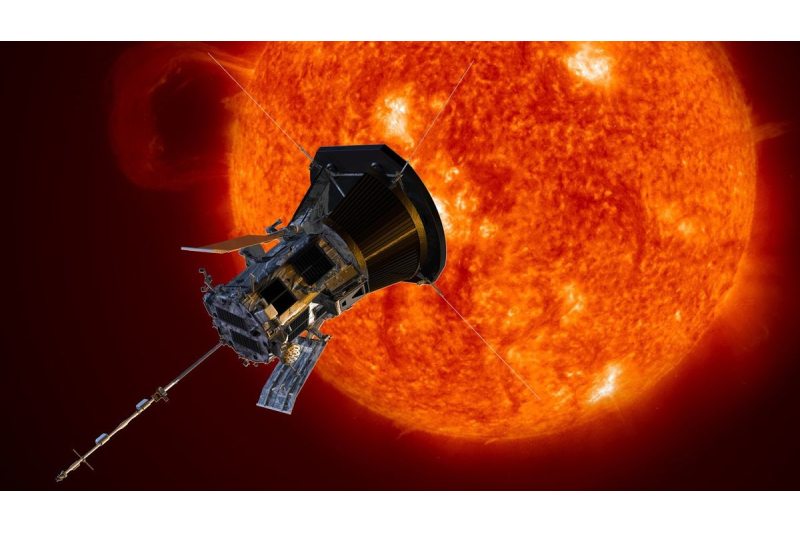NASA’s Parker Solar Probe (PSP) reached a record-breaking 20th close approach to the sun on June 30, matching its own distance record by traveling around 7.26 million kilometers from the solar surface. Meanwhile, the Gulf countries and many other regions of the world are experiencing one of the hottest summers ever. Again matching its own record, PSP reached its close approach, or perihelion, at a speed of 635,266 km/hr around the sun.
NASA’s Parker Solar Probe (PSP) reached a record-breaking 20th close approach to the sun on June 30, matching its own distance record by traveling around 7.26 million kilometers from the solar surface. Meanwhile, the Gulf countries and many other regions of the world are experiencing one of the hottest summers ever. Again matching its own record, PSP reached its close approach, or perihelion, at a speed of 635,266 km/hr around the sun.
After a beacon tone indicated that everything was running normally and the spacecraft was in good health, the spacecraft checked in with mission operators at the Johns Hopkins Applied Physics Laboratory in Laurel, Maryland, US, on July 2. At the same distance, PSP will orbit the sun.
In 2021, PSP became the first spacecraft to travel into the solar corona, or upper atmosphere, while on a mission to “touch the Sun.” The mission visits the only star that humans can closely examine, giving unprecedented observations to humanity in the process as each orbit brings it closer despite extreme heat and radiation.
The PSP and its sensors are shielded from the Sun by a 4.5-inch-thick carbon composite barrier that can survive temperatures of around 1,377 Celsius, allowing it to conduct its unparalleled research.
PSP will completely change the way we think about the Sun. The spacecraft is progressively approaching the Sun’s surface in an orbit that is well within Mercury’s orbit, closer than any previous orbit has been. PSP is gathering data and photos as it soars into the solar wind’s outermost region, the corona, for the first time in an effort to better understand the formation and evolution of solar wind.
Additionally, it plays a crucial role in predicting modifications to the space environment that impact Earthly life and technology. Compared to previous spacecraft, PSP will travel closer to the Sun by around seven times. The spacecraft will complete 24 orbits around the Sun in a span of seven years.
This mission will help scientists better understand how the Sun affects Earth, as we dwell in its atmosphere. Understanding and maybe predicting space weather, which can alter satellite orbits, decrease their lifespans, or interfere with onboard electronics, will depend heavily on data from PSP. Four sensor suites on the probe are intended to picture the solar wind and investigate magnetic fields, plasma, and energetic particles.
On April 17, 2021, high-speed protons and electrons known as solar energetic particles (SEPs) were flung at velocities close to the speed of light and struck multiple spacecraft across the inner solar system. PSP played a crucial role in witnessing this rare and large outburst from the Sun. It was, in fact, the first time that spacecraft circling Mars and five distinct, well-separated points between the Sun and Earth had observed SEPs.
The late Dr. Eugene N. Parker, who helped to develop our current understanding of the Sun, is honored by the mission’s name. Parker created a mathematical hypothesis to explain the solar wind, which is the Sun’s continuous outflow of solar material, while he was still a young professor at the University of Chicago in the middle of the 1950s.
Parker repeatedly revolutionized the profession during his career by putting forth theories that addressed the fundamental concerns regarding the operations of the Sun and stars in the universe. Parker made history in 2018 when he saw the launch of the spacecraft that bears his name. At age 94, he passed away on March 15, 2022.
